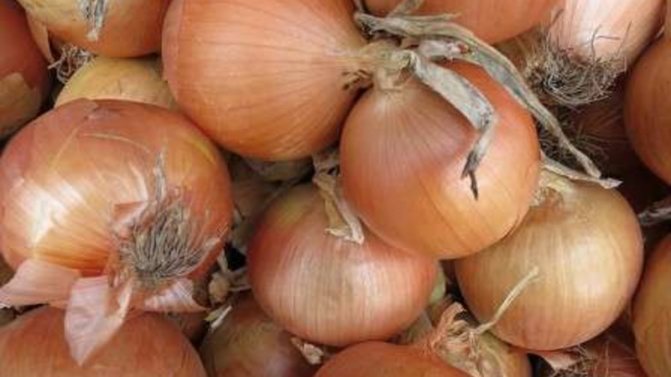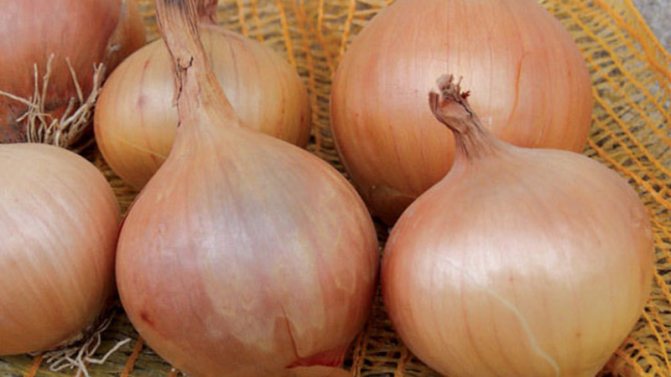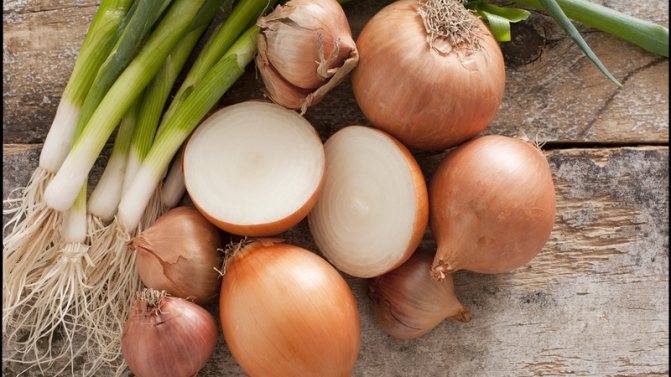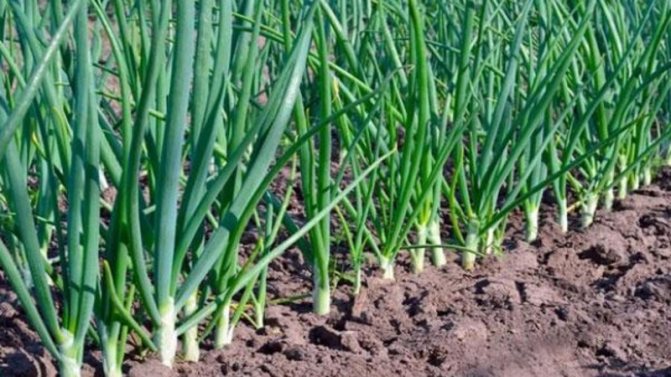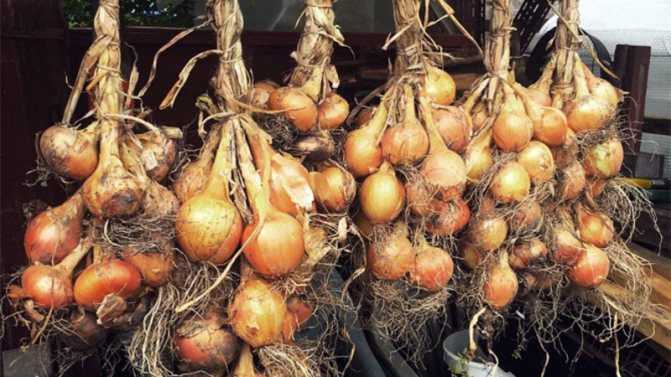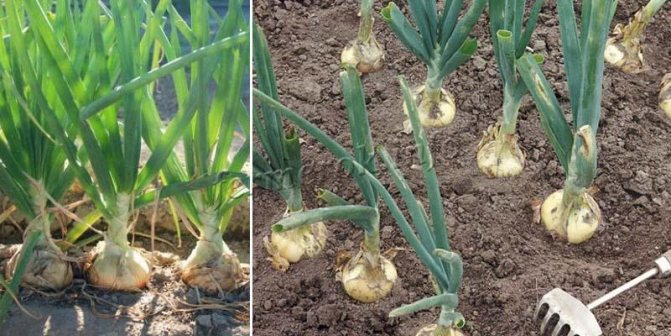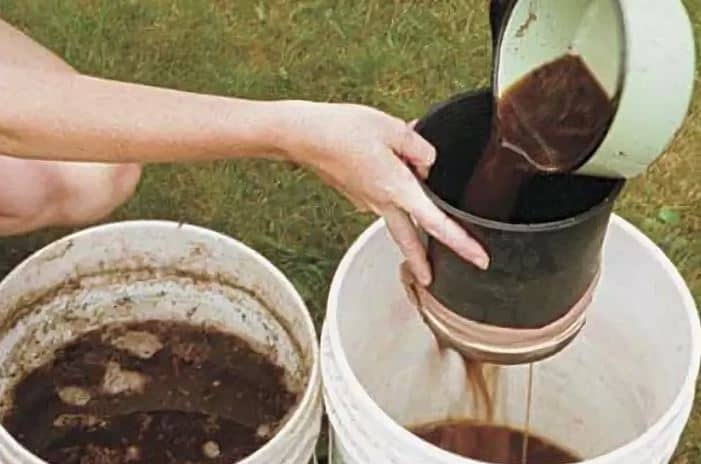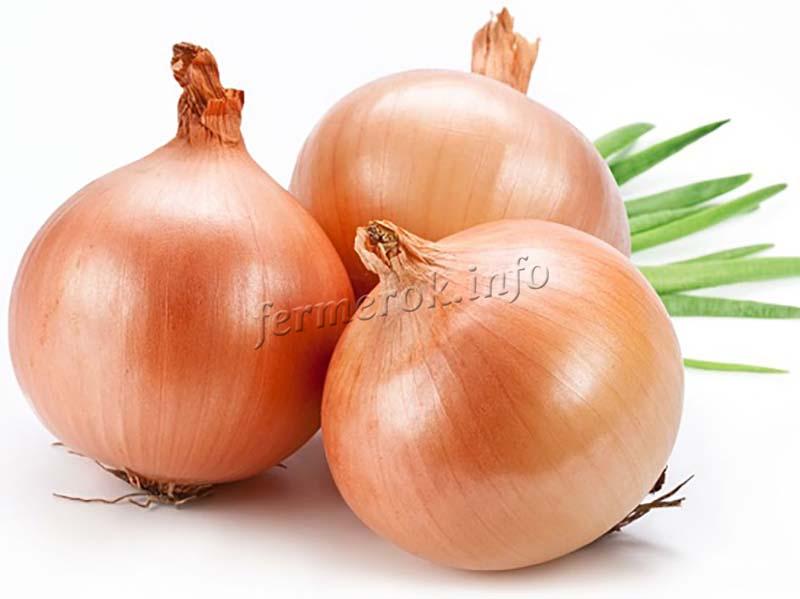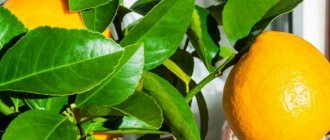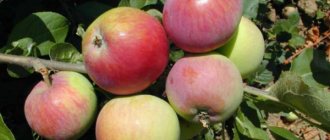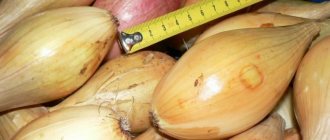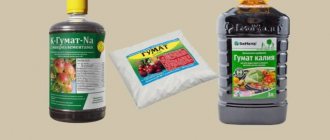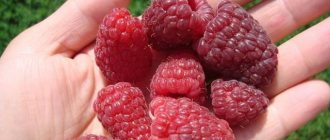Many gardeners prefer to grow Sturon onions in their beds. It is believed that this variety is highly resistant to diseases and severe frosts. They appreciate it for its simplicity in care and ease of cultivation. But you can get a good harvest only if you follow a few important rules.
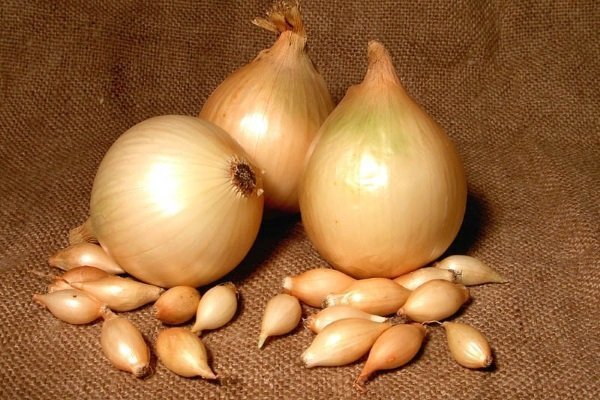
Bow Sturon


Onion Sturon (pack of seeds with a sowing scheme)


Sturon bow. Characteristics of the variety
Description and characteristics of the variety
The Sturon onion was bred in the Netherlands, and the famous onion of the Stuttgarter Riesen variety became the predecessor. Sturon is characterized by an average ripening period, so harvesting can begin as early as 100-115 days after germination.
Sturon is classified by producers as medium early varieties. Thanks to this, it is suitable for cultivation in the northern regions, as well as in the middle lane. This onion can easily withstand freezing, since it was originally intended for the harsh conditions of Northern Europe. The optimal regions for this vegetable are regions with a temperate and warm climate.
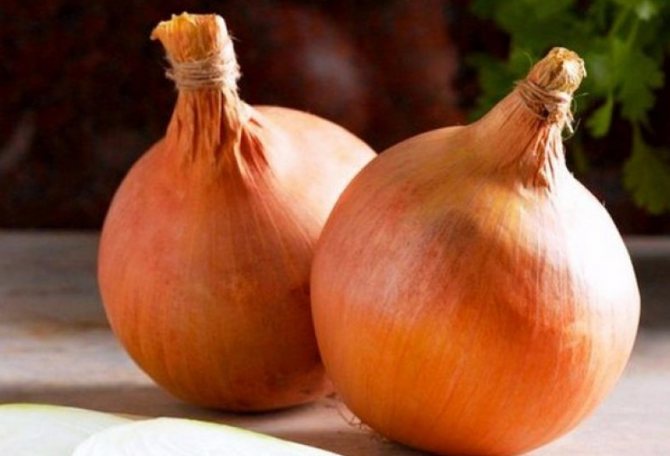

The variety gives large bulbs, the average weight of a vegetable is 110 g, but it can even reach 180–220 g. The vegetable has an elongated shape, or an elliptical shape, which makes slicing easier, simpler and more convenient. The bulbous neck is thin, the bottom is small. The upper scales have a sufficiently high density and yellow-brown color - there are 5 layers of this type of scales. Closer to the middle of the bulb, the flesh acquires a green color. The taste of the pulp is rather spicy, with a spicy bitterness, the smell is characteristic and pronounced.
How is it stored?
A distinctive quality of the variety is its good keeping quality. Good quality healthy bulbs can be stored under the right conditions for up to 9 months.
Important! Store onions in well-ventilated wooden or plastic boxes.
Suitable temperature + 13-15 ° С... Periodically, you should sort out the onion, removing the spoiled specimens. Observing the rules for growing sturon onions, you will get a rich harvest, which, thanks to the good keeping quality of the variety, will be stored until next summer.
Properties of the Sturon onion
Like any vegetable crop, onions have beneficial properties, but at the same time, they can be harmful. Before you grow it, you need to be informed about these properties, as well as study the contraindications to its use.
Learn also about onion varieties such as Chalcedony, Exibishen and Elan.
Benefit
Onions of this variety are widely used in cooking, medicine, and cosmetology. This was facilitated by the rich vitamin and mineral compositions. This onion is rich in vitamins of groups A, B, C, D, E, H, PP, as well as minerals such as potassium, calcium, chlorine, phosphorus, magnesium, sodium, iron, zinc, fluorine, copper and selenium. Not only the turnip is useful, but also the green part due to the large amount of ascorbic acid and carotene.
- In general, the following list of positive properties of Sturon can be distinguished:
- Favorable effect on the digestive tract. Due to this vegetable, the production of digestive enzymes is activated, and all digestive processes are accelerated.
- Strengthening the immune system and increasing defenses - due to this, the body can resist acute respiratory viral infections.
- Antimicrobial action: that is why onions are used not only for nutrition, but also as an antiseptic and antibiotic.
- Onions are antioxidants. In the case of regular consumption of the vegetable in food, it can reduce the risk of developing cancer.
- It is used for preventive measures against atherosclerosis, since it lowers blood cholesterol levels and helps to normalize the process of fat metabolism.
- Strengthens blood vessels due to flavonoids and essential oils.
- Renews the cellular composition of the blood.
- It has anti-inflammatory, antiviral and strengthening effects when applied externally.
It is also worth noting that:
- 100 g of onions contains 84 g of water, 1.6 g of proteins, 0.3 g of fat, 7 g of carbohydrates, 4 g of dietary fiber, 1 g of ash substances;
- the bulb contains 5% tryptophan and 1% histidine.


Harm and contraindications
The vegetable has a high acidity, due to which hyperacid (with increased acidity) gastritis can develop and irritation of the mucous membrane of the digestive tract can be caused. Also, this vegetable crop activates the nervous system, and therefore can raise the level of blood pressure.
Therefore, you should not eat a lot of this vegetable for people who suffer from such ailments as pancreatitis, gastric ulcer and intestinal ulcer, as well as those whose nervous system has increased excitability.
Important! People with diseases of the kidneys and liver, as well as the heart, should be careful to eat onions,
otherwise, it can lead to exacerbation of these diseases.
Growing two-year-old onions
It was said above that Sturon is grown as a two-year-old. To do this, a few weeks before the onset of frost, a set is taken and planted on previously prepared beds. The variety is not afraid of frost, therefore, with the beginning of the first thaws, the onions will gain strength, and the heads will grow.
Sturon is also planted with the arrival of spring. Since autumn, organic fertilizers are applied to the proposed planting site, and mineral fertilizers are applied immediately before planting. The heads are deepened by 2-3 centimeters, leaving 2 centimeters of soil above their shoulders. The distance between the bulbs is 9-12 centimeters.
Sturon should never be fertilized with chemicals containing nitrogen. The fact is that onions tend to accumulate nitrates in themselves, therefore they subsequently cause great harm to the human body.
The Sturon variety has proven itself well and continues to gain popularity among domestic farmers due to its unpretentiousness and resistance to diseases.
How to grow at home before winter
For winter planting of Sturon, it is necessary to study when to plant it and what are the optimal sowing dates, suitable growing conditions, required soil and fertilizers, and what growing methods exist.
Optimal sowing time
Since Sturon is not afraid of frost, its seeds can be sown into the ground as soon as it thaws to a depth of 5–7 cm. In the middle zone of the Russian Federation, this is often the second April decade. However, if spring came early, then the seeds should be planted even in the first days of April.
It is better to plant onion sets selected for planting in autumn 2-3 weeks before the arrival of stable frosts. This is usually the period from late September to early October. For spring planting, this may be a period 1–2 weeks after the end of the morning frosty cold. Basically, it occurs from mid-April to early May.
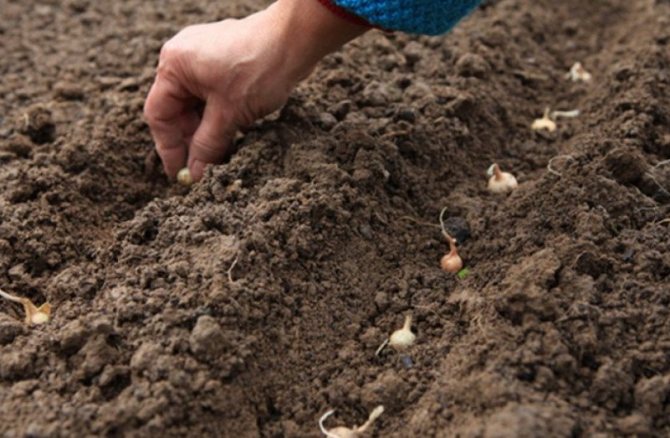

Growing conditions
The optimal conditions for the cultivation of this variety are as follows:
- temperature - + 18 ... + 22 ° С;
- humidity - not less than 80% at a depth of 40–50 cm;
- the site must be free from flooding, unshaded, sunny and dry;
- when sowing in regions with low rainfall and low occurrence of aquifers, it is better to cultivate a vegetable on a flat area;
- in places with excessive humidity, it is better to sow onions in specially formed beds;
- the most suitable predecessors for this crop are cucumbers, cabbage or radishes.
Soil and fertilizers
This vegetable crop likes nutritious soil, and therefore, before planting in future beds, it is necessary to add humus or chicken droppings, and also in the process of planting growth, fertilize three times, using both organic and mineral fertilizers. It is worth noting that at the end of the growing season, nitrogenous fertilizers will create inconveniences for the ripening of the bulbs, since the onions quickly absorb nitrates.
Did you know? According to the UN, onions are grown in 175 countries of the world, which is twice the number of countries where wheat is grown (the record holder in terms of harvest).
Suitable soil for onions is loose, loamy and fertile. If you plant a vegetable in a soil poor in nutrients, then the bulbs will not be able to grow to the desired volume. Sturon also grows poorly on acidic soils. In addition, to plant a vegetable, it is necessary to clear the area for the beds from dry grass and weeds.
Growing methods
There are 2 ways to breed Sturon onions: growing from seeds, and planting sets. It should be noted that the winter growing method is possible only when planting seedlings.
Growing from seeds
Seeds are generally planted in April. Before planting the seeds, they need to be moistened in warm water, to which a few drops of Epin are added. Next, wrap it in a small piece of gauze and place it on the windowsill, which is illuminated by the sun's rays. Once the gauze is dry, it should be moistened so that growth processes can start.


The seeds germinate for 2–4 days, after which they can be laid out in the ground. For sowing, you need to make grooves in the soil about 1.5–2 cm deep. The optimum distance between the grooves is 20-30 cm. After the nigella has been sown, the grooves should be sprinkled with peat or humus to a level of 2 cm. It is necessary to moisten the crops occasionally.
Planting sevka
As already mentioned, you can plant onion sets both before the arrival of winter cold weather, and at the beginning of spring. To do this, select whole, undamaged bulbs without traces of rot and mold. An indicator of a high-quality seed is dry rustle.
Before planting, the onion sets should be soaked in a solution of copper sulfate or potassium permanganate (how long should it be soaked?) (In both versions - in a ratio of 1 g per 1 l of water) or in salt water (1 tablespoon of salt per 1 l of water). Then rinse the bulbs under running water, and after that you can plant them in the ground. The holes need to be dug to a depth of 3 cm, the distance between them is at least 10 cm, and better - 20-30 cm.
Features of cultivation agricultural technology
The popularity and prevalence of Sturon onions among farmers and summer residents necessitates not only a detailed description of the variety, but also how the planting takes place, what methods of growing onions are and what should be the care for them. Sturon can be grown for one or two years, but large heads germinate only in the second year.
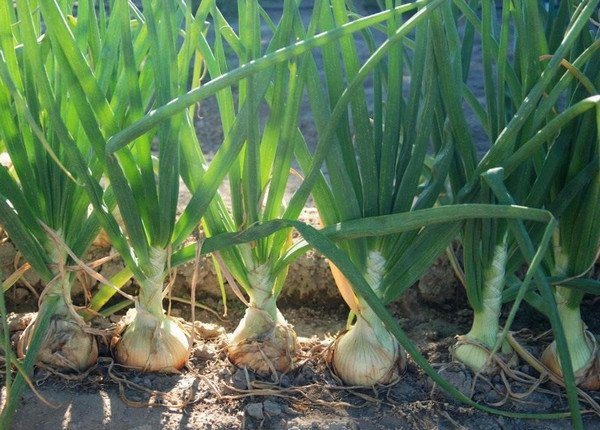

In order to get green leaves in the winter off-season, onions are planted in winter using greenhouses of a simple design or ordinary pots to grow them on the windowsill in the house. You can cultivate "Sturon" by buying a set in a store (this is done in order to get a rich harvest in the first year) or by growing the planting material yourself.
Find out how to fertilize onions and whether you need to break off the arrows.
It is a painstaking job to choose the right sets for planting: they should be about 2 cm in size, with a flat surface. Do not plant bulbs:
- even slightly rotten or damaged;
- wet;
- with signs of disease or parasite exposure;
- bulbs that have come out of dormancy (with green arrows and small roots).
Having purchased the material for the first planting in the fall, it is necessary to provide it with proper storage conditions. To avoid diseases of the planting material, it stored at a certain temperature, which varies depending on the following steps:
- The first stage: a week, temperature - + 20 ... + 25 ° С.
- Second stage: a week, temperature - +30 ° С.
- Third stage: a week, temperature - + 35 ° С.
- The fourth stage: 8-12 hours, temperature - +40 ° С.
- For the rest of the time, the bulbs should be stored in a dry room with a temperature of + 18 ... + 20 ° C, regularly ventilating it.
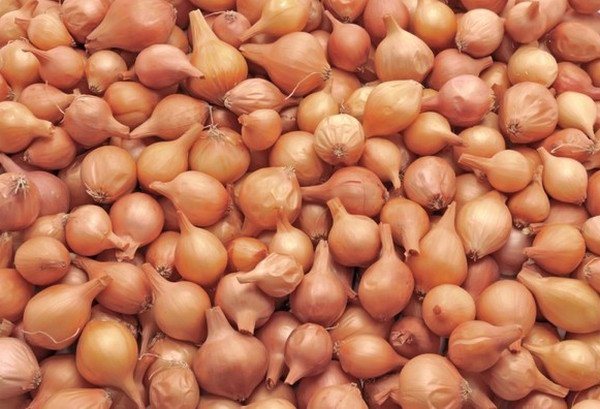

Seed sowing dates
It is not difficult to grow onion sets of this variety on your own from seeds, but you need to know a few rules that will help effective germination and get a good harvest. This is, firstly, the observance of the correct timing of sowing seeds. As a rule, they are planted as early as possible - in the first or second week of April, when the ground thaws by 5-6 cm. In southern latitudes, they can be sown at the end of March.
Planting seeds
It is necessary to prepare a plot and plant seeds, observing the sequence of the following stages:
- In the fall, dig up the soil and fertilize with compost (half a bucket per sq. M), wood ash (1 glass per sq. M), phosphorus fertilizer (1 tablespoon per sq. M) and nitroammophos, azofos (1 tablespoon per sq. M).
- When spring comes, plow the plot and make beds 2-3 days before planting.
- Compact the soil and cover with black plastic.
- Soak the seeds for several hours in a manganese solution, aloe juice or warm water, wrap them in a damp cloth and leave for two days, making sure that the cloth remains damp.
- Before planting, water the beds with warm water, form furrows on them for sowing seeds, and water again.
- Plant seeds in rows (small, with a distance of 10 cm between each) or with a ribbon (wide, with a distance of up to 20 cm).
- Sprinkle the seeds with a small layer of earth.
- Compact the soil, cover with peat or compost, sprinkle with a little water.


Did you know? Afghanistan is considered the homeland of onions, from where this vegetable spread to other countries. However, there is another point of view: for the first time, onions began to be cultivated in China. In the mountainous region of Tien Shan, there are so many wild onions that the name of one of the mountains in translation from Chinese means "Onion slope".
Features of variety care
The Sturon bow does not need any special care. The rules are standard: watering, fertilizing, loosening the soil, and weeding.
Watering and feeding
Top dressing is carried out three times during the entire growing season. This will require organic matter and mineral fertilizers. It is necessary to water the beds abundantly only in the first half of the growing season, and after 2-3 weeks of harvesting the bulbs, you should completely stop moistening so that they can ripen. Watering should not be excessive, otherwise the bulbs will start to rot and a significant part of the crop will be lost. Water the onion once every 7-10 days. Irrigation temperature - + 18 ... + 25 ° С.
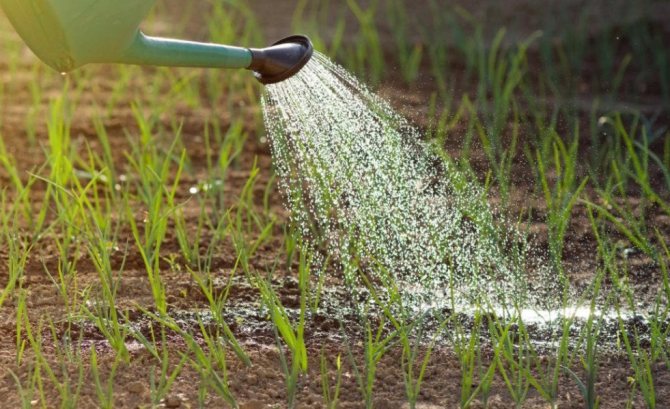

Loosening the soil
In the quality of caring for onion beds, regular loosening of the soil is required - then air and water will quickly reach the bulbs. It is necessary to loosen the soil every time after heavy rain or watering. Thanks to loosening, it is easier and easier, and also more convenient to weed.
Important! When loosening onions, it is necessary to go 3 cm deep into the ground for better root breathing.
Weeding
It is also necessary to weed the weeds every time after heavy rain or watering, because if the soil is dry, then the entire root system of weeds will remain in the soil. If the weeds are small, then you can remove them simply with your hands, protecting them with gloves. Weeds with a dense or long root system must be cut with scissors, and after that the rest of the plant must be removed from the soil. If the weeds are not removed, the bulbs will grow small.
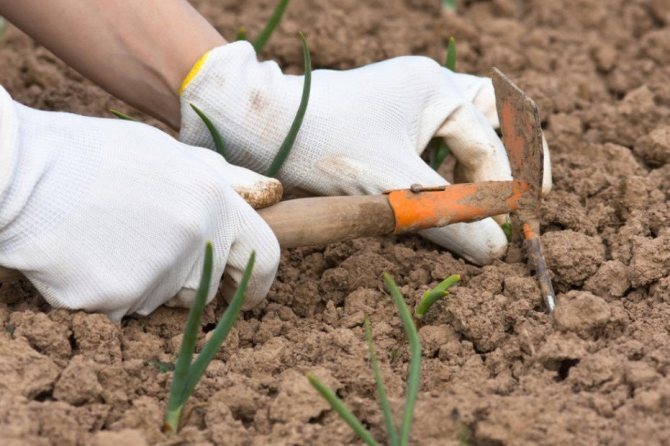

Growing in the second year
In the second year, the Sturon sevka is planted in order to get a full harvest. The soil is treated in the same way as before sowing seeds. In addition, in some cases, the question of whether it is necessary to trim the onion before planting in the fall becomes relevant.
Optimal conditions
Sandy loam soils work well for Sturon onions. It is worth choosing a flat and bright area, with a low occurrence of groundwater, in order to reduce the possibility of rotting of the culture. The soil should be neutral in acidity.
Landing dates
The best time for planting is considered to be the end of April - beginning of May, when warm weather sets in.
But some summer residents plant Sturon onions before winter. In this case, a natural question arises as to whether it is necessary to trim the onion before planting in the winter. The answer is unequivocal: winter seeding does not require pruning so that it does not immediately grow.
How to plant sevok in open ground
Planting sevok in open ground is quite simple. To do this, perform the following actions:
- Furrows up to 6 cm deep are prepared on the bed.The distance between them is left about 20 cm, and between plantings - up to 10 cm.
- Before planting, it is necessary to add 30 g of wood ash and 50 g of manure to the ground (this is the amount per 1 m). The total volume is calculated based on the size of the beds.
- Up to 40 small onions should be planted per 1 m of the planting groove. Place the set at a depth of 3 cm.
- Then the planting is covered with loose soil and slightly compacted.
Diseases and pests
This variety is resistant to diseases and pests, but protective and preventive measures must still be followed.
Before planting onions, many people disinfect the bulbs in a special solution. For this, you can use the drug "Fitosporin". If you do not want to take risks and purchase a ready-made set, then it is easy to grow it with your own hands from seeds. However, in this case, disinfection is also a necessary procedure.
Did you know? Onions contain more natural sugar than apples and pears.
For adult onion plantings, it is imperative to carry out treatment against pests and diseases. For this, you can use the biological product "Fito Plus". To prevent diseases, it is also worth changing the planting places of the onion sets.
One of the most common diseases affecting onions is downy mildew... You need to fight it before planting the vegetable in the soil. To do this, 2-3 weeks before planting, it is necessary to warm the bulbs in warm water at a temperature not exceeding + 40 ° С. This event should be held for 6-7 hours.


Most often from pests, onions are affected nematodes... To combat these worms, spraying should be carried out using the drugs "Mercaptophos" and "Phosphamide".


Culture reviews
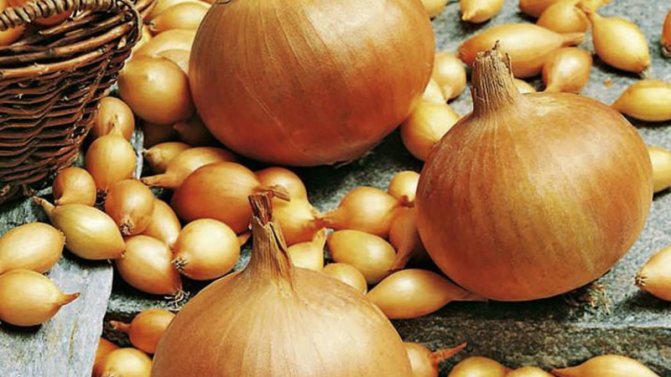

The reviews about Sturon are numerous and positive. Almost everyone who grows this crop is satisfied with the result:
Irina, Penza: “Last year I decided to plant Sturon winter bow. I planted a small amount in a greenhouse. In general, I was satisfied. The plant is unpretentious, caring for it is very simple. Watered infrequently, but carried out prophylaxis against fungal diseases. The culture turned out to be with a strong immune system, did not get sick. Now I will plant in the spring to get a marketable crop. "
Lyudmila, Bryansk: “I have been growing for more than one year. For planting, I use only purchased sets. The culture is high-yielding and unpretentious. Large and sweet onions, suitable for salads, first courses and side dishes, for winter preparations. The culture is resistant to diseases and pests, but for prevention purposes it was treated twice with "Fitosporin". I applied top dressing only once, but the harvest was still at its best: I harvested at least 2.5 kg per square meter. "
Harvesting and storage of crops
It is necessary to dig out the onion crop in dry weather, when the entire green part of the plant has dried up and the neck has softened.To find out if the onion is ripe, you need to pay attention to the main sign of ripeness - all the feathers begin to turn yellow and tend to the ground. Delaying the process of harvesting a vegetable can lead to the fact that the onions begin to sprout and, as a result, will be poorly stored. Therefore, harvesting must be timely.
It is necessary to lay this vegetable crop for storage after it has completely dried and ventilated so that there is no excess moisture in it. You cannot immediately move the onions from the beds to the cellar, shed or other places for storing the crop.
Learn more about how to properly store onions in the winter at home.
Store onions in a cool place with a temperature of + 2 ... + 4 ° С and not higher than + 13 ... + 15 ° С, as well as with an air humidity not exceeding 80%. Many gardeners prefer to store onions in the sand. It is also worthwhile to inspect all the bulbs before sending them for storage, cut off the roots and dry tops, and also select specimens that have not matured or have deteriorated.
For convenience, the bow should be placed in boxes with holes made of wood or plastic. In this way, the vegetables will be ventilated and space will be saved. The maximum height of the bulbs in the container should be no more than 8-10 cm.
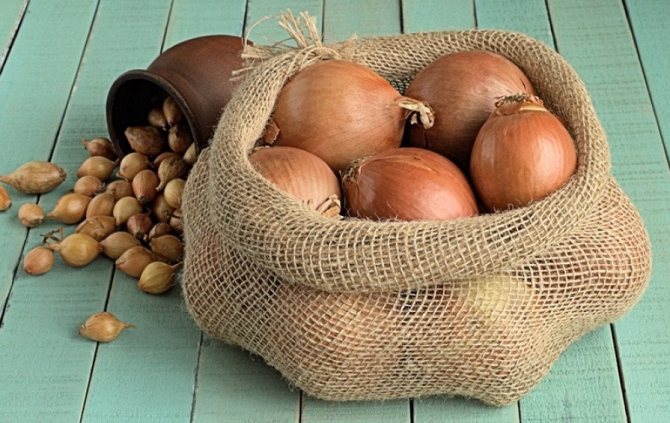

Seed planting rules
Preparing a site for planting onions begins with digging up the soil and applying compost. One square meter will require half a bucket of fertilizer. Wood ash and phosphorus fertilizers are also added. In the spring, a couple of days before the planting of Sturon, the plot is plowed up and the beds are marked. After that, the soil is compacted and covered with a black film so that it warms up well.
Before sowing, the seeds are soaked for a couple of hours in a solution of potassium permanganate or aloe juice. Then they are placed in a moistened piece of cloth for 2 days. Before sowing, the beds are abundantly watered and grooved. The distance between the rows of the Sturon bow is 10 cm.
Helpful hints
To get the best, most abundant and tasty harvest, it is worth using useful recommendations for cultivating the variety:
- To get large bulbs in 2 years, you need to grow a vegetable in 2 stages: first, getting onion sets from nigella seeds, then planting this set.
- If you want to collect a significant harvest in 1 year, it is better to purchase a ready-made set from an agricultural store.
- You can easily grow onions in many places in the house, right up to the windowsill, at any time of the year, observing all the rules. So there will always be a fragrant onion feather for salads at home.
- It is recommended to place dill or carrot beds next to onion plantings. In this way, these vegetables will scare away parasites from each other.
- Do winter planting exclusively in cold and not frozen ground to prevent early formation of seedlings.
- In the spring, plant only in the soil that has been warmed up and prepared from the autumn period.
- You cannot pick off green feathers, otherwise the harvest will not be generous.
It will be useful for you to read about the vitamin composition of onions and their beneficial properties.
Growing Sturon onions is a relatively simple process, and at the same time, it requires attention and accuracy, even despite the unpretentiousness of the culture. If you follow all the simple rules and recommendations for caring for onion plantings, you can regularly get a bountiful and tasty harvest.
Vegetable characteristic
Sutron is one of the best varieties of onions, since after the first sprouts appear, you can harvest already on day 100-110. The variety is resistant to frost, tolerates even the most severe frosts.
Large bulbs are formed only in the second year, in the first season only good planting material can be obtained. With proper onion care, up to 35 tons of harvest can be obtained from one hectare. This attracts many entrepreneurs involved in the cultivation of vegetables for sale.
A feature of the Sturon variety is the shelf life of the pods.If all the necessary requirements are met, the crop will have a fresh appearance within 8 months. Sturon fruits can be characterized by an oblong ellipse shape. Sometimes the weight of one onion can reach 210 grams.
What soil to plant
Sturon onion grows best on sandy and loamy soils. When planted in acidic and clay soil, the vegetable grows much worse, which has an adverse effect on obtaining a good harvest.
You should be careful when choosing a site. It should be dry and sunny, level or not a slight elevation.
This will prevent the occurrence of increased soil moisture after melting snow (during autumn planting) or prolonged rains.
An important role in obtaining a good harvest is played by what crops were located on this plot of land before it. Sturon onion grows well after legumes, tomatoes, potatoes, etc.
Compliance with the rules of agricultural technology plays an important role. The garden must be prepared several weeks before the expected planting of seeds (nigella) or seeds (one-year bulbs) so that the earth settles a little. First, you need to dig up the soil, remove weeds and other debris. If the soil is infected with worms or other pests, it must be disinfected. To do this, the land must be treated with an infusion of tobacco, table salt or copper sulfate.
We must not forget about fertilizers for onions. Organic fertilizers should be used, and in their absence - superphosphate, ash, potassium salt.
Enriching the soil with nutrients will help provide all the necessary components for the rapid growth of planting material.
Advantages and disadvantages
When choosing a seed for large-scale cultivation, farmers try to find out all the characteristic features of the variety. Breeders claim that Sturon onions have the following benefits:
- low cost of seed;
- high yield under favorable conditions;
- frost resistance;
- long shelf life without deterioration;
- fruit size - 200-210 g;
- you can grow onion feathers in greenhouses or at home in pots;
- high cost of marketing in the market;
- resistance to vegetable pests and fungal diseases.
It is due to these advantages that the Sturon onions receive positive reviews from farms throughout Russia, Ukraine and Belarus. The disadvantages of the hybrid include exactingness to the composition of the soil.
Fight disease
Onion Sturon (description of the variety and reviews were presented above) is quite resistant to various diseases inherent in this culture, however, sometimes the culture can be affected by diseases. If this did happen, then a solution of copper sulfate is used to fight diseases, half a teaspoon of which is diluted into five liters of water. But, as practice shows, farmers rarely encounter such problems.
Sturon is a Dutch onion variety that has gained immense popularity with a large number of vegetable growers around the world. If we compare the Sturon onion with other varieties, then, as mentioned earlier, in many ways it outperforms them. The love of farmers for this vegetable crop is due to the fact that Sturon has a high yield, excellent taste, as well as unpretentiousness in care and climatic conditions.


If you adhere to the tips and recommendations discussed in this article, you can get a rich harvest and provide yourself with high-quality, tasty, healthy and environmentally friendly onions, which are simply impossible to buy in a store.
Sturon is an onion variety respected by many gardeners and farmers, which came to us from Holland. It received wide recognition, first of all, for its unpretentiousness and long-term storage with minimal loss of the harvested crop.So, today we will talk in detail about the Sturon onion: a description of the variety, reviews and nuances of agricultural technology.
It doesn't matter if you are an experienced gardener or have recently become the happy owner of a land plot, you probably want to know which variety of onions is worthy of becoming a regular on your plot. The Sturon Bow is well worth it. On an industrial scale, this variety is grown less often due to the fact that it has average yields.

